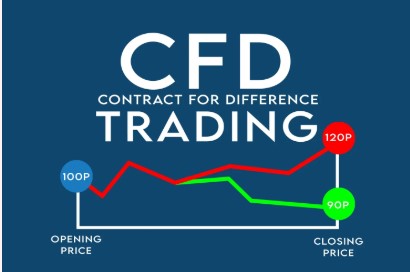
4 minute read
Top 10 Best Forex Trading strategy for consistent profits
Achieving consistent profits in forex trading requires a reliable strategy tailored to market conditions and your trading style. Here are the top 10 forex trading strategies, each designed to help traders enhance their success rate and maximize returns.
1. Trend Following Strategy
This strategy involves identifying the direction of the prevailing market trend and trading in its direction.
How It Works:
Use technical indicators like Moving Averages (MA), MACD, or RSI to confirm trends.
Enter trades when the market shows clear momentum in one direction.
Advantages:
Simple and effective.
Works well in trending markets.
Disadvantages:
Ineffective during ranging or choppy markets.
2. Range Trading Strategy
Range trading focuses on identifying price levels where the market consistently reverses within a range.
How It Works:
Identify support (lower limit) and resistance (upper limit) levels.
Buy near support and sell near resistance.
Advantages:
Ideal for stable markets.
Provides multiple trading opportunities.
Disadvantages:
High risk in volatile markets or during breakouts.
3. Scalping Strategy
Scalping involves making numerous trades to capture small price movements within short time frames.
How It Works:
Use 1-minute to 5-minute charts.
Focus on high-liquidity currency pairs with low spreads.
Advantages:
Quick profits from frequent trades.
Reduces exposure to market risks.
Disadvantages:
Requires intense focus and fast execution.
High transaction costs can accumulate.
4. Breakout Trading Strategy
This strategy focuses on identifying price levels where the market is likely to break out and create significant movements.
How It Works:
Look for consolidation or range-bound patterns.
Enter trades when the price breaks above resistance or below support.
Advantages:
Captures strong market moves early.
Works well during major news events or high volatility periods.
Disadvantages:
False breakouts can result in losses.
5. Fibonacci Retracement Strategy
The Fibonacci retracement tool helps identify potential levels of support and resistance based on key Fibonacci ratios (e.g., 38.2%, 50%, and 61.8%).
How It Works:
Use the tool to identify retracement levels during a trending market.
Enter trades near key levels where price is likely to reverse.
Advantages:
Provides precise entry and exit points.
Combines well with other technical indicators.
Disadvantages:
Requires practice to master.
Not effective in highly volatile markets.
6. Swing Trading Strategy
Swing trading involves holding trades for several days to capture medium-term price movements.
How It Works:
Use daily or 4-hour charts to identify trends and reversals.
Focus on key support and resistance levels.
Advantages:
Suitable for part-time traders.
Fewer trades reduce transaction costs.
Disadvantages:
Requires patience and discipline.
Vulnerable to overnight risks.
7. News Trading Strategy
This strategy capitalizes on market volatility during major news releases, such as economic reports or central bank announcements.
How It Works:
Monitor an economic calendar to identify high-impact events.
Enter trades immediately before or after news events.
Advantages:
High profit potential from large price movements.
Short time commitment.
Disadvantages:
High volatility can lead to significant losses.
Requires quick decision-making and execution.
8. Moving Average Crossover Strategy
This strategy uses two moving averages (e.g., 50-day and 200-day) to identify buy and sell signals based on their crossover points.
How It Works:
A bullish crossover occurs when a shorter MA crosses above a longer MA (buy signal).
A bearish crossover occurs when a shorter MA crosses below a longer MA (sell signal).
Advantages:
Simple to implement.
Works well in trending markets.
Disadvantages:
Generates false signals during sideways markets.
9. Carry Trade Strategy
Carry trading involves buying a currency with a high-interest rate and selling a currency with a low-interest rate, profiting from the interest rate differential (swap).
How It Works:
Focus on currency pairs with significant interest rate differences.
Hold positions over the long term to earn interest.
Advantages:
Provides steady income from swaps.
Works well in stable, low-volatility markets.
Disadvantages:
High exposure to market risks.
Ineffective during market downturns or high volatility.
10. Price Action Strategy
This strategy relies on analyzing raw price movements without using indicators.
How It Works:
Identify patterns such as pin bars, inside bars, or engulfing candles.
Combine with key support and resistance levels.
Advantages:
Works in all market conditions.
Provides clear and direct trading signals.
Disadvantages:
Requires strong analytical skills and experience.
Can be subjective in interpretation.
Conclusion
Choosing the best forex trading strategy depends on your experience, trading style, and risk tolerance. Beginners may prefer simple strategies like trend following or range trading, while experienced traders may gravitate towards advanced methods like price action or Fibonacci retracements.
Whichever strategy you choose, always backtest it thoroughly, incorporate proper risk management, and stay disciplined to achieve consistent profits in forex trading.
See more:










